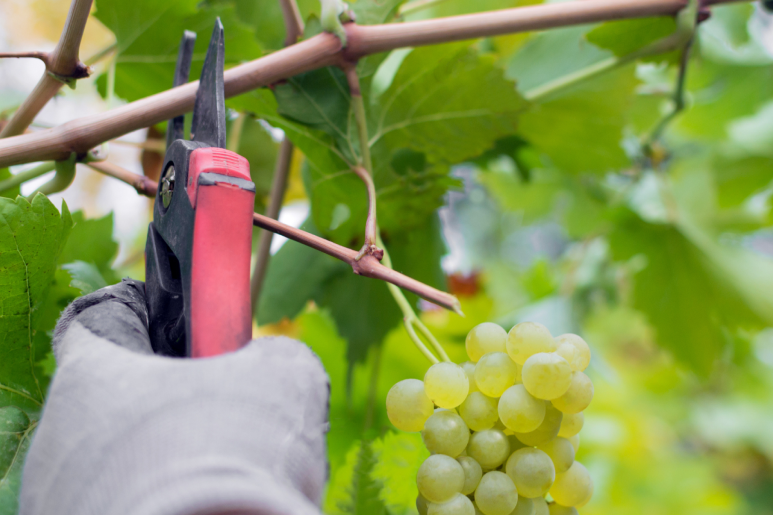Within the sprawling vineyards of Napa Valley, a symphony of growth and care unfolds with each changing season.
Central to this orchestration is the practice of pruning grape vines, a skillful art that shapes the vines’ health, yields, and eventual quality of the wines they produce.
In this guide, we invite you to delve into the intricate world of vineyard management, with a specific focus on the transformative act of pruning grape vines.
From the careful snip of each branch to the resulting symphony of flavors in the wineglass, the art of pruning grape vines is a delicate balance between tradition, science, and craftsmanship.
Read also: Wine Making Process in Napa Valley
Why Pruning Grape Vines Matters—Cultivating Health and Quality
Pruning grape vines is far more than a mere act of shaping the vine’s appearance—it’s a vital process that influences the overall health of the vine and the grapes it bears. Here’s why pruning grape vines matters:
Resource Allocation – Pruning ensures that the vine channels its energy into producing high-quality grapes by removing excess growth that could otherwise deplete its resources.
Sunlight Penetration – Careful pruning allows sunlight to reach the grapes, aiding in photosynthesis and optimal ripening.
Air Circulation – pruned vines have better airflow, reducing the risk of diseases and mildew.
Yield Control – Pruning helps regulate yields, allowing vintners to manage the quantity and quality of grapes produced.
Techniques and Timing
Pruning grape vines involves a delicate balance of decisions, combining knowledge, experience, and an understanding of each vine’s unique needs. Some key techniques and considerations include:
Cane Pruning – A common method where one or more canes are selected to bear fruit for the upcoming season.
Spur Pruning – In this technique, spurs—short branches—are chosen to bear fruit. This method can lead to higher yields.
Timing – Pruning occurs during the dormant season, usually in late winter or early spring, when the vine’s energy is focused below the ground.
Read also: The Art of Vineyard Management with Own A Napa Vineyard
Hands-On Learning with Own A Napa Vineyard
Own A Napa Vineyard offers an unparalleled opportunity to not only own a piece of Napa Valley but also immerse yourself in the world of vineyard care.
With access to hands-on lessons on pre-pruning, pruning, sucker removal, leaf management, and harvesting, you’ll gain a deep understanding of the meticulous art of vineyard management.
For only $119, you can own two vines and embark on a journey of exploration and connection.
Whether you’re a wine enthusiast, an aspiring winemaker, or simply seeking a unique experience, the hands-on lessons provided by Own A Napa Vineyard open the door to a world of knowledge and appreciation.
Read also: A Step-by-Step Guide on How to Make Wine from Grapes
Nurturing Vines, Cultivating Expertise
Pruning grape vines is more than an agricultural practice—it’s an act of cultivation that transforms the vines into works of art, each destined to produce exceptional wines.
By delving into the intricacies of pruning and understanding its profound impact on vineyard health and wine quality, you’re embarking on a journey of expertise and appreciation.
With Own A Napa Vineyard, the journey becomes tangible. As you learn the art of pre-pruning, pruning, and more, you’re not only nurturing vines but also cultivating your understanding of the vineyard’s heartbeat. Join us in celebrating the tradition, science, and artistry of pruning grape vines, and be part of the legacy that unfolds in every glass of wine.
Call us at Own A Napa Vineyard, and let us guide you through a transformative experience that goes beyond owning a piece of land.





